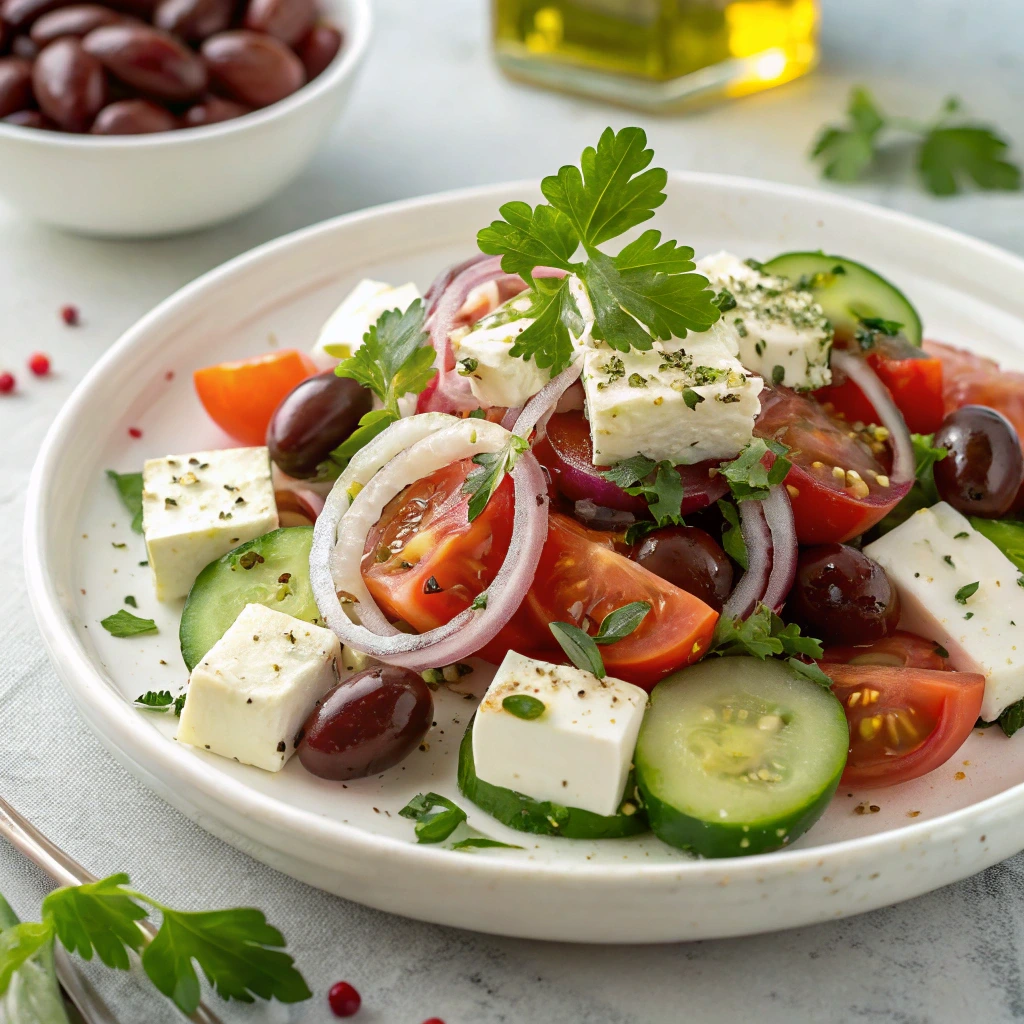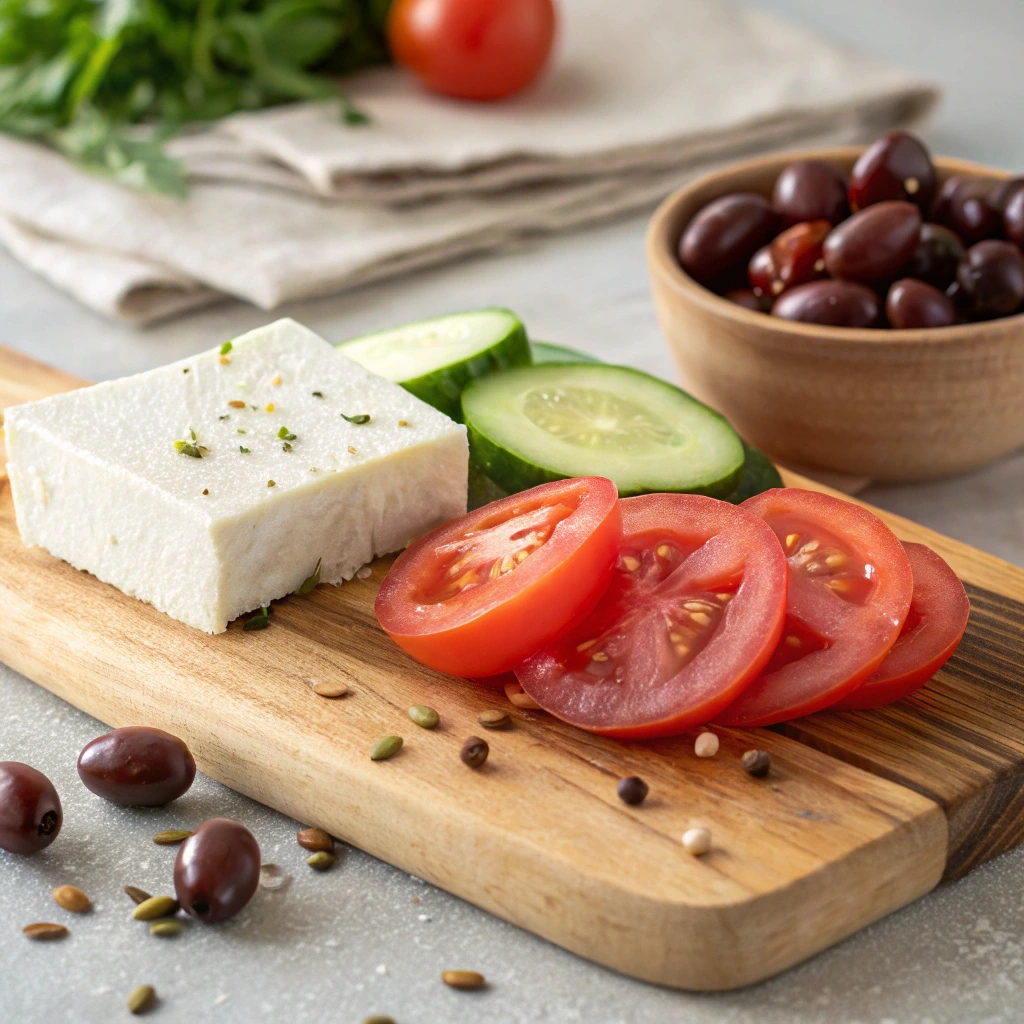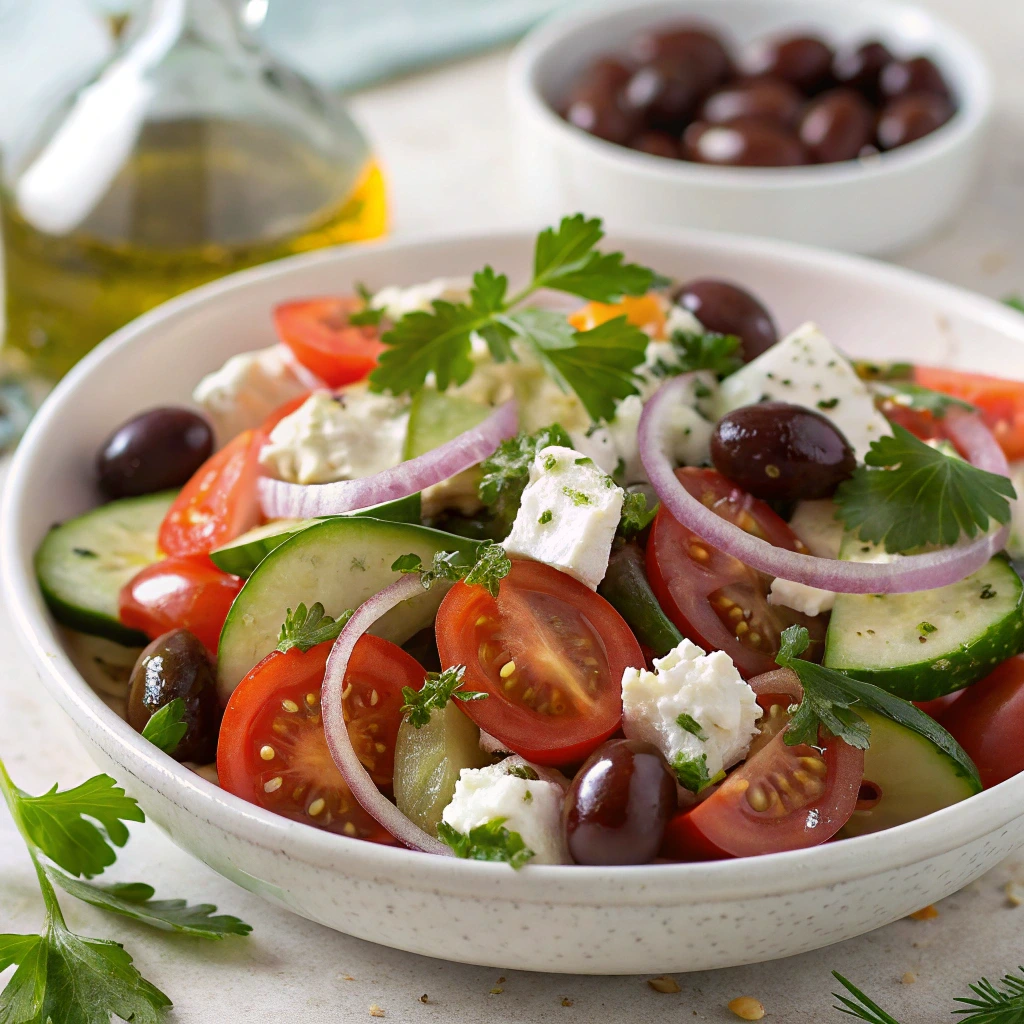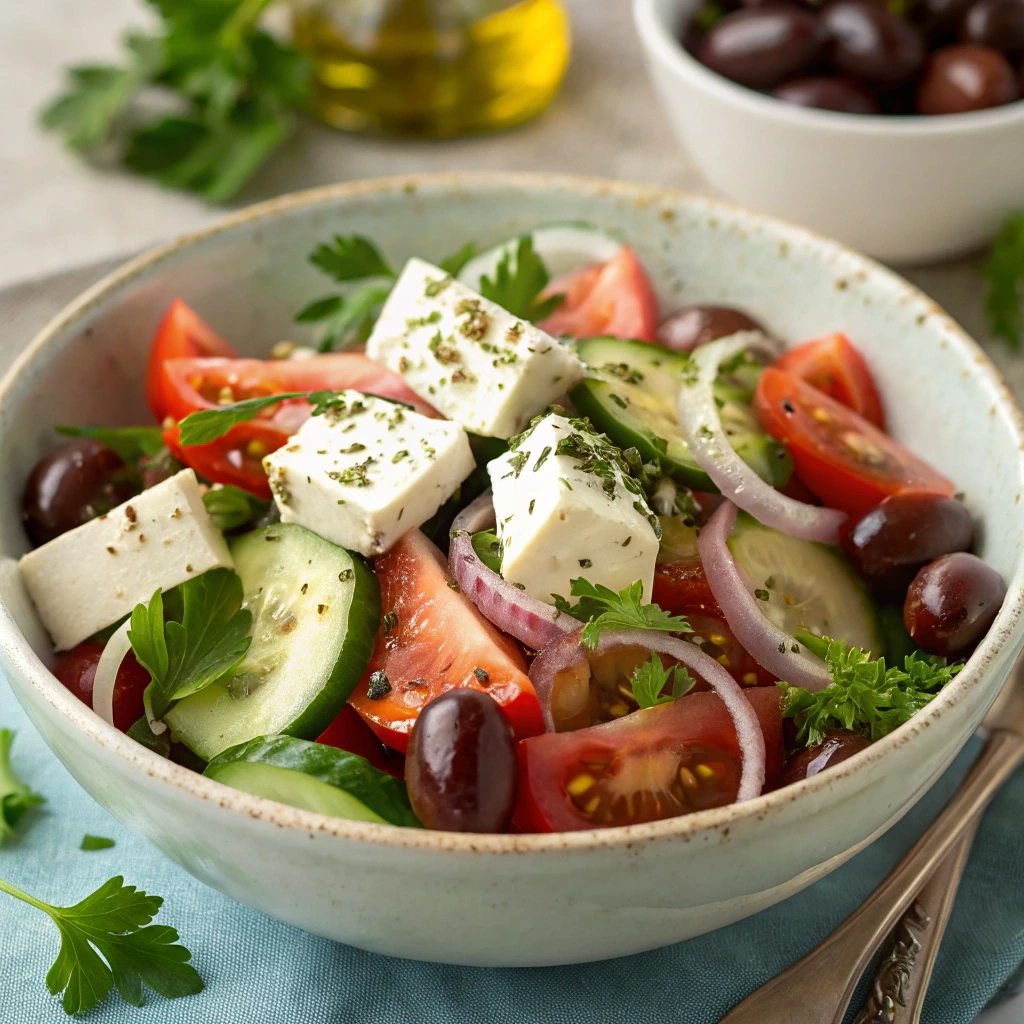A Taste of the Mediterranean: Why Greek Salad Speaks to the Soul
There’s something undeniably special about a dish that connects you to sun-drenched coastlines, rich cultural heritage, and the simplicity of good ingredients. Greek Salad is that dish. Maybe you’ve savored one on a terrace overlooking the Aegean Sea, or perhaps you’re looking to recreate that bliss in your own kitchen. Wherever you are on your culinary journey, learning how to make the perfect Greek Salad is about embracing freshness, simplicity, and a timeless Mediterranean tradition.
Whether you’re a seasoned home cook or just getting started, this guide will walk you through every step to create a Greek Salad that’s not only authentic but bursting with flavor and personality.

What Is a Greek Salad? (A Mediterranean Classic)
Origins of the Traditional Greek Salad (Horiatiki)
Greek Salad, or “Horiatiki,” literally means “village salad.” It originates from rural Greece and was traditionally made with just-picked vegetables and local cheese. It’s rustic, hearty, and intentionally unfussy—reflecting the agricultural roots of Greek cuisine.
Common Misconceptions
You might be used to lettuce-based salads, but a true Greek Salad has no lettuce. That’s right—skip the leafy greens. Authentic recipes center around chunky vegetables, briny olives, and creamy feta.
Greek Salad and the Mediterranean Diet
Greek salad isn’t just a refreshing side dish — it’s a symbol of the Mediterranean diet, one of the healthiest eating patterns in the world. Rich in vegetables, healthy fats, and minimal processing, this diet has been linked to numerous health benefits, including heart health and longevity.
According to Harvard T.H. Chan School of Public Health, the Mediterranean diet emphasizes plant-based foods, olive oil, and moderate dairy consumption — all key components of a classic Greek salad.
By enjoying Greek salad regularly, you’re not only indulging in bold, zesty flavors but also supporting your long-term well-being.s.
Cultural Relevance in Greek Cuisine
This salad is more than a side dish—it’s a staple in Greek meals, often enjoyed alongside grilled meats, seafood, or as a light lunch with crusty bread.
Essential Ingredients for the Perfect Greek Salad
Here’s what you need to build the base of a perfect Greek Salad:
Table: Traditional Greek Salad Ingredients
| Ingredient | Description & Tips |
|---|---|
| Tomatoes | Use vine-ripened or cherry tomatoes for sweetness |
| Cucumbers | Persian or English cucumbers for crunch |
| Red Onions | Thinly sliced for sharpness |
| Green Bell Peppers | Optional, adds a mild bitterness |
| Kalamata Olives | Pitted, whole or halved |
| Feta Cheese | Use a block, not pre-crumbled, for authenticity |
| Extra Virgin Olive Oil | Cold-pressed, Greek if possible |
| Oregano | Dried Greek oregano is key |
| Sea Salt & Pepper | To taste |
| Lemon Juice (optional) | Adds brightness |
| Capers (optional) | For extra brininess |
Key Flavor Makers
- Kalamata olives: Add a briny, fruity punch.
- Feta cheese: Crumbly and tangy, a must-have.
- Greek olive oil: Rich and peppery.
Optional Add-ins
- Capers for extra saltiness.
- Lemon juice for zest.
- A pinch of crushed red pepper for heat.

Step-by-Step Recipe: How to Make Authentic Greek Salad
1 – Prep Your Vegetables
- Wash and chop tomatoes into wedges or halves.
- Slice cucumbers into thick half-moons.
- Thinly slice the red onion and green bell pepper.
2 – Assemble the Salad
- Combine veggies in a large bowl.
- Scatter in the Kalamata olives.
- Place a thick slice or crumbled pieces of feta on top.
3 – Make the Dressing
No need for mixing bowls—just drizzle:
- Extra virgin olive oil
- Sprinkle of oregano
- Optional: a squeeze of fresh lemon juice
4 – Final Touches
- Toss gently or leave layered for a more traditional presentation.
- Add a pinch of sea salt and cracked pepper.
- Serve immediately or let sit for 10 minutes to meld flavors.
Tips, Variations & Meal Ideas
Make It Vegan or Dairy-Free
- Substitute vegan feta or skip cheese altogether.
- Use avocado for a creamy contrast.
Turn It Into a Meal
- Add grilled chicken, shrimp, or chickpeas.
- Serve with warm pita or crusty bread.
Greek Salad Meal Prep Tips
- Store without the dressing to keep veggies crisp.
- Keep feta and olives separate until serving.
- Best enjoyed within 2-3 days.
Seasonal Variations
- Summer: Heirloom tomatoes, grilled zucchini.
- Fall: Roasted red peppers, olives marinated in herbs.

Greek Salad FAQs
Can you make Greek salad without olives?
Yes, though olives add a distinctive flavor, you can skip them or use alternatives like pickled onions or capers.
What’s the difference between Greek and Mediterranean salad?
Mediterranean salads vary by region and may include grains or legumes. Mediterranean Salad sticks to simple veggies, feta, and olives.
Is Mediterranean salad good for weight loss?
Absolutely. It’s nutrient-dense, low in carbs, and high in fiber and healthy fats.
What’s the best dressing for Mediterranean salad?
A simple mix of extra virgin olive oil, dried oregano, and lemon juice. Avoid heavy bottled dressings.
Conclusion: Savor the Simplicity
Greek Salad is more than just a healthy side—it’s a celebration of fresh ingredients and timeless tradition. Whether you’re whipping up a quick lunch or complementing a grilled entrée, this dish brings a bit of sunshine to your table. And now that you know how to make it authentically, you’re just one bite away from a mini escape to the Mediterranean.

Call to Action
Have your own twist on the classic Greek Salad? Share your recipe or tips in the comments below. And don’t forget to tag your creations on social media with #PerfectGreekSalad!
